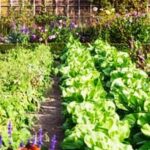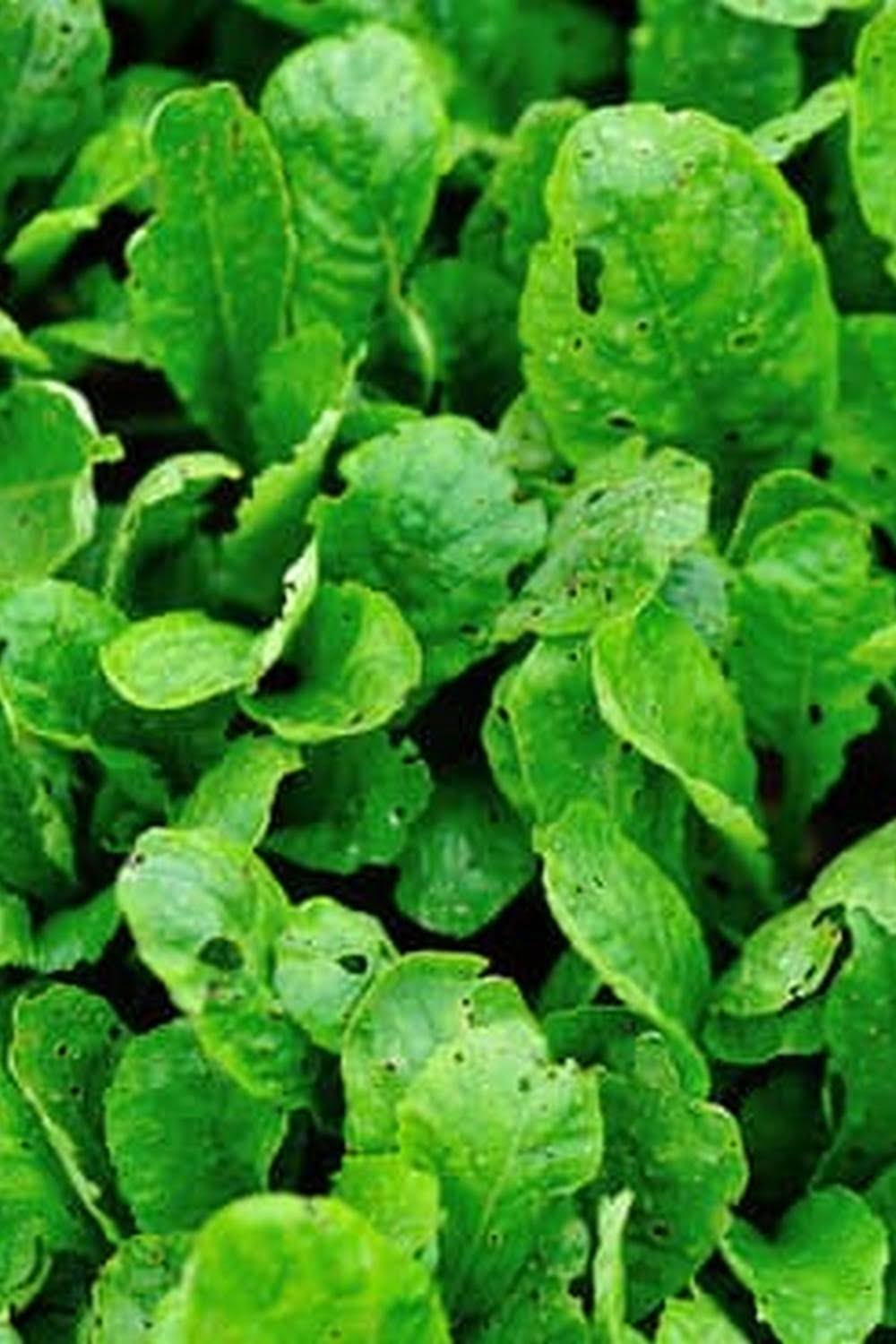Raised bed vegetable gardens offer a practical and efficient way to grow vegetables in your backyard or garden. In this article, we will explore the various plans for raised bed vegetable gardens layouts, helping you make the most of your gardening space. Raised bed gardens are becoming increasingly popular among both novice and experienced gardeners due to their numerous benefits.
One of the main advantages of raised bed gardens is their versatility and adaptability to different types of spaces, including small yards or even urban environments. By elevating the soil level, raised beds provide better drainage and soil quality, which can result in higher yields and healthier plants. Additionally, these gardens are easier to maintain and can help minimize weed growth, making them a convenient option for busy gardeners.
When planning the layout for your raised bed vegetable garden, it is essential to consider factors such as sunlight exposure, access to water sources, and proximity to your home. By choosing the right location for your raised bed garden, you can maximize its productivity and ensure that your vegetables thrive.
In the following sections, we will discuss how to select the best materials for building a raised bed garden and provide tips on soil preparation and fertilization to help you get started on your gardening journey.
Benefits of Raised Bed Gardens
Raised bed gardens have become increasingly popular among gardeners of all levels due to their numerous benefits. One of the main advantages of raised bed gardens is the control they offer over soil quality and composition. By using raised beds, gardeners can easily amend and improve the soil to suit the specific needs of different plants. This is especially valuable for gardeners dealing with poor soil quality or drainage issues in their yard.
Another benefit of raised bed gardens is their ability to provide better drainage compared to traditional in-ground gardens. The raised design allows excess water to drain more effectively, preventing waterlogged soil which can lead to root rot and other issues. Additionally, the elevated nature of raised beds can make gardening more accessible for individuals with mobility issues or limited space.
In addition to improved drainage and soil control, raised bed gardens also offer better weed and pest management. The defined boundaries of a raised bed make it easier to spot and remove weeds before they become a problem. Likewise, elevated beds can be easier to protect from pests like slugs and snails. Overall, these benefits make raised bed gardens an attractive option for both novice and experienced gardeners looking to optimize their growing space and produce a successful harvest.
Choosing the Right Location for Your Raised Bed Garden
When planning to start a raised bed vegetable garden, one of the crucial decisions to make is where to place it. Selecting the right location can significantly impact the success of your garden. Ideally, choose a spot that receives at least 6-8 hours of sunlight each day. Vegetables need sunlight to grow and thrive, so having a sunny location will promote healthy plant development.
Consider Accessibility
Another important factor to consider when choosing a location for your raised bed vegetable garden is accessibility. Make sure the area is easily accessible for watering, weeding, and harvesting. You wouldn’t want to place your garden in a hard-to-reach spot that makes daily maintenance tedious and cumbersome.
Check for Proper Drainage
Proper drainage is essential for the health of your plants. Ensure that the location you choose has good drainage to prevent waterlogging, which can lead to root rot and other plant diseases. Avoid low-lying areas where water tends to accumulate or areas with compacted soil that prevents proper water flow.
Protect From Wind Exposure
In some cases, excessive wind exposure can be detrimental to your plants. If your chosen location is particularly windy, consider setting up windbreaks such as trellises or fences to protect your vegetables from damage. Additionally, windy conditions can cause soil erosion, so take this into account when selecting the perfect spot for your raised bed vegetable garden layouts.
Essential Materials Needed for Building a Raised Bed Garden
Raised bed vegetable gardens are becoming increasingly popular among gardeners due to their numerous benefits. When it comes to building a raised bed garden, there are some essential materials that you will need to gather. One of the key components is the lumber for the raised bed frames.
Cedar and redwood are popular choices as they are rot-resistant and durable, making them ideal for long-lasting raised beds. Additionally, you will need screws or nails to secure the boards together.
Another important material needed for building a raised bed garden is hardware cloth or landscape fabric. This will help prevent weeds from growing up into your raised bed and provide some protection against pests like moles or gophers.
It’s also a good idea to have a level on hand to ensure that your raised bed is even and stable once it’s built. Lastly, don’t forget about soil mix to fill your raised bed – a combination of topsoil, compost, and other amendments will provide the nutrients your vegetables need to thrive.
In order to build a successful raised bed vegetable garden, it’s crucial to have all the necessary materials prepared before starting construction. By investing in quality materials and taking the time to plan out your layout, you’ll be setting yourself up for a bountiful harvest of fresh produce right in your own backyard.
| Materials Needed | Additional Notes |
|---|---|
| Lumber (Cedar or Redwood) | Rot-resistant and durable for long-lasting raised beds |
| Screws or Nails | To secure boards together |
| Hardware Cloth or Landscape Fabric | Prevents weeds and pests from entering the bed |
Different Layout Options for Raised Bed Vegetable Gardens
When it comes to planning the layout for your raised bed vegetable garden, there are several options to consider that can optimize space, sunlight exposure, and ease of maintenance. One popular layout option is the square foot gardening method, which divides the raised bed into square sections for planting individual crops. This method is great for maximizing yields in a small space and makes it easier to organize and rotate your crops throughout the season.
Another layout option is the linear planting design, where rows of vegetables are planted in straight lines within the raised bed. This layout is ideal for larger raised beds and allows for easy access to each plant for watering, weeding, and harvesting. Additionally, this layout can create a visually appealing garden with neat rows of various vegetables.
For those looking for a more decorative approach, consider a tiered or cascading layout for your raised bed vegetable garden. By stacking multiple levels of raised beds at different heights, you can create a visually interesting garden that also provides better drainage and accessibility.
This layout option works well for gardens with uneven terrain or limited space, as it allows you to grow a variety of plants in a small footprint. Experimenting with different layouts can help you find the best design that suits your needs and preferences when planning your raised bed vegetable garden.
Overall, the key to choosing the right layout option for your raised bed vegetable garden is considering factors such as space availability, sun exposure, aesthetic preferences, and maintenance convenience. By carefully planning and designing the layout of your raised bed garden based on these considerations, you can create a functional and productive outdoor space that will provide you with bountiful harvests throughout the gardening season.
Tips for Soil Preparation and Fertilization
When it comes to creating a successful raised bed vegetable garden, proper soil preparation and fertilization are key components. You want to ensure that your plants have access to the nutrients they need to thrive and produce bountiful harvests. Here are some tips to help you get your raised bed garden off to a great start:
- Start by testing the pH of your soil to determine if any amendments are needed. Most vegetables prefer a slightly acidic soil with a pH between 6.0 and 7.0.
- Before filling your raised bed with soil, consider adding a layer of compost at the bottom to enrich the soil and provide additional nutrients for your plants.
- Choose a high-quality potting mix or garden soil specifically formulated for raised beds. These mixes are typically well-draining and contain essential nutrients for plant growth.
In addition to preparing your soil, fertilization is also crucial for the success of your raised bed vegetable garden. Here are some tips for fertilizing your plants effectively:
- Consider using organic fertilizers, such as compost or manure, which can help improve soil structure and provide slow-release nutrients to your plants.
- Follow recommended guidelines for fertilizing specific vegetables, as some may have higher nutrient requirements than others.
- Avoid over-fertilizing, as this can lead to nutrient imbalances in the soil and potentially harm your plants. It’s always better to start with less fertilizer and adjust as needed based on plant performance.
By following these tips for soil preparation and fertilization, you can create an optimal growing environment for your raised bed vegetable garden. With the right balance of nutrients and organic matter in the soil, you’ll be well on your way to enjoying a productive and thriving garden throughout the growing season.
Best Vegetables to Grow in Raised Beds
Raised bed vegetable gardens offer a versatile and productive way to grow a variety of vegetables in your own backyard. When planning the layout of your raised bed garden, it’s important to consider which vegetables are best suited for this type of gardening. Certain vegetables thrive in the nutrient-rich, well-draining environment that raised beds provide, making them ideal choices for these gardens.
One popular vegetable that is well-suited for raised bed gardens is tomatoes. Tomatoes are vining plants that benefit from the support structures that can be easily integrated into raised beds. Additionally, the elevated soil temperatures in raised beds help tomatoes establish strong root systems and produce bountiful fruit.
Other vegetables that do well in raised beds include peppers, cucumbers, lettuce, carrots, and radishes. These vegetables all have shallow root systems that can take full advantage of the rich soil found in raised beds.
When selecting the best vegetables for your raised bed garden layout, consider factors such as sun exposure, plant height, and spacing requirements. By choosing a diverse selection of vegetables that complement each other’s needs, you can create a thriving and fruitful garden that maximizes space and production. With careful planning and consideration of which vegetables work best in raised beds, you can enjoy a successful harvest throughout the growing season.
| Vegetable | Benefits |
|---|---|
| Tomatoes | Benefit from support structures and warm soil |
| Peppers | Do well in nutrient-rich soil with good drainage |
| Lettuce | Thrives in the controlled environment of raised beds |
Maintenance and Care for a Thriving Raised Bed Vegetable Garden
When it comes to maintaining and caring for a thriving raised bed vegetable garden, there are several key steps to keep in mind. Regular maintenance is crucial to ensure that your plants stay healthy and productive throughout the growing season. Here are some tips to help you keep your raised bed garden in top condition:
- Watering: One of the most important aspects of caring for a raised bed vegetable garden is proper watering. Make sure to water your plants consistently, especially during hot summer months. Consider installing a drip irrigation system or using soaker hoses to provide even hydration.
- Weeding: Keep an eye out for weeds in your raised bed garden and remove them regularly. Weeds can compete with your vegetables for nutrients and water, so it’s essential to stay on top of this task.
- Pruning and Harvesting: Prune any dead or diseased plant material regularly to promote healthy growth. Additionally, make sure to harvest your vegetables at the right time to encourage further production.
In addition to regular maintenance tasks, there are some specific care practices that can help your raised bed vegetable garden thrive:
- Companion Planting: Consider planting compatible vegetables together in your raised beds to maximize space and productivity. For example, pairing tomatoes with basil can deter pests and enhance flavor.
- Rotate Crops: To prevent soil depletion and reduce the risk of disease, rotate your crops annually in different sections of your raised bed garden.
- Mulching: Adding a layer of mulch around your plants can help retain moisture, suppress weeds, and regulate soil temperature. Organic materials such as straw, shredded leaves, or grass clippings are excellent choices for mulching.
By following these maintenance and care tips for your raised bed vegetable garden, you’ll be well on your way to enjoying a bountiful harvest of fresh produce throughout the gardening season. Remember that each garden is unique, so feel free to experiment with different techniques and find what works best for you.
Conclusion and Final Thoughts on Raised Bed Garden Layouts
In conclusion, raised bed vegetable gardens offer a fantastic option for those looking to grow their own produce in a more organized and efficient manner. The benefits of raised bed gardens, such as improved soil drainage, better pest control, and easier maintenance, make them an attractive choice for both novice and experienced gardeners alike.
By carefully choosing the right location, gathering essential materials, and selecting the appropriate layout for your raised bed garden, you can set yourself up for success in your gardening endeavors.
When planning your raised bed vegetable garden layout, it is important to consider factors such as sunlight exposure, water access, and proximity to your home for convenient care and harvesting. You can choose from various layout options depending on the space available to you, including traditional square or rectangular beds, tiered designs for maximizing space usage vertically, or even circular layouts for a unique aesthetic appeal.
Each layout has its own advantages and can be tailored to fit your specific needs and preferences.
As you embark on creating your raised bed vegetable garden, remember to prioritize soil preparation by using quality compost and fertilizers to provide essential nutrients for healthy plant growth. Selecting the right vegetables to grow in your raised beds based on factors like compatibility with each other and the amount of sunlight they require will also contribute to the success of your garden.
With proper maintenance and care routines in place, your raised bed vegetable garden is sure to flourish and provide you with a bountiful harvest season after season.
Frequently Asked Questions
How Do You Plan a Raised Bed Garden Layout?
Planning a raised bed garden layout involves considering several factors such as sunlight exposure, water source, and plant compatibility. It’s important to sketch out the dimensions of your raised beds and map out where each type of vegetable will be located based on their growing requirements.
What Is a Good Layout for a Vegetable Garden?
A good layout for a vegetable garden typically involves organizing plants in rows or blocks according to their height and sun exposure needs. Placing taller plants on the north side of the garden ensures they won’t overshadow shorter ones. Grouping vegetables with similar water and soil requirements together can also make maintenance easier.
What Vegetables Can You Plant Together in a Raised Bed?
When planting vegetables together in a raised bed, it’s crucial to consider companion planting to maximize growth and discourage pests. For example, growing tomatoes alongside basil can enhance tomato flavor while repelling certain insects.
Planting carrots alongside onions can help deter carrot flies due to the onion scent. It’s essential to research which vegetables complement each other before deciding on your planting layout.

If you’re looking to get into vegetable gardening, or are just looking for some tips on how to make your current garden better, then you’ve come to the right place! My name is Ethel and I have been gardening for years. In this blog, I’m going to share with you some of my best tips on how to create a successful vegetable garden.





